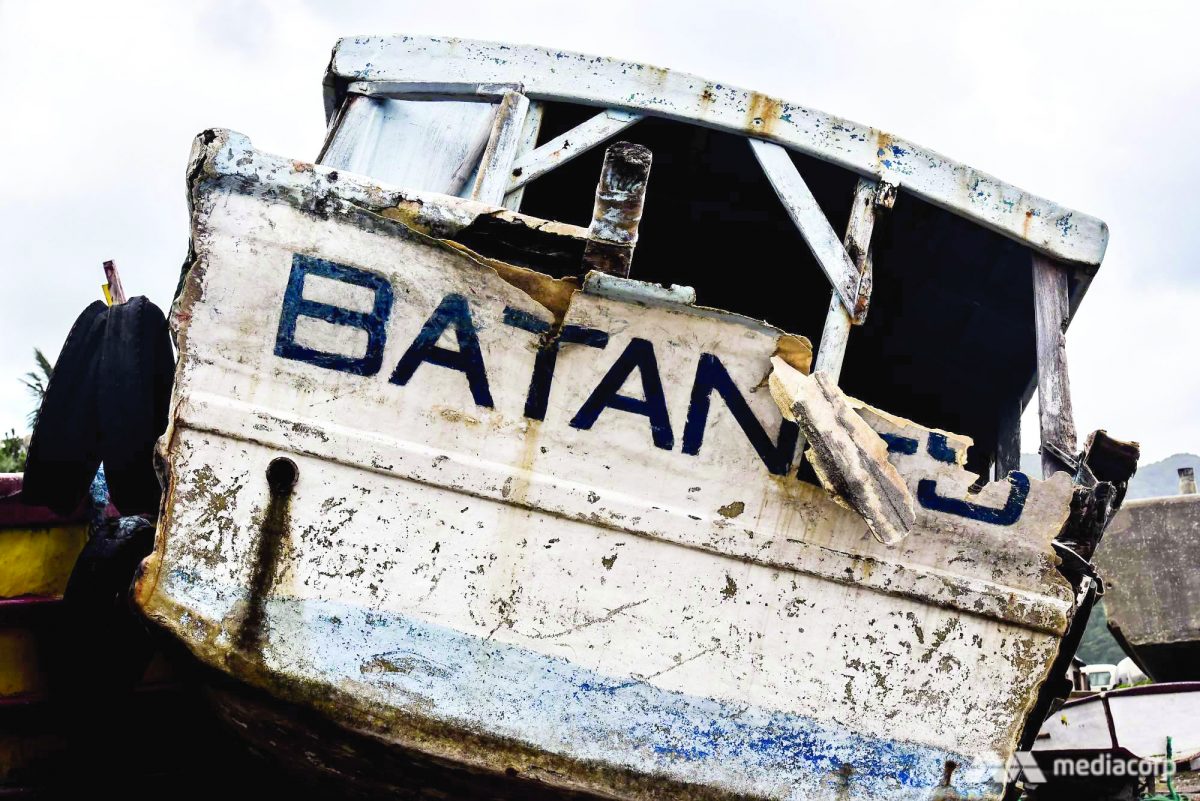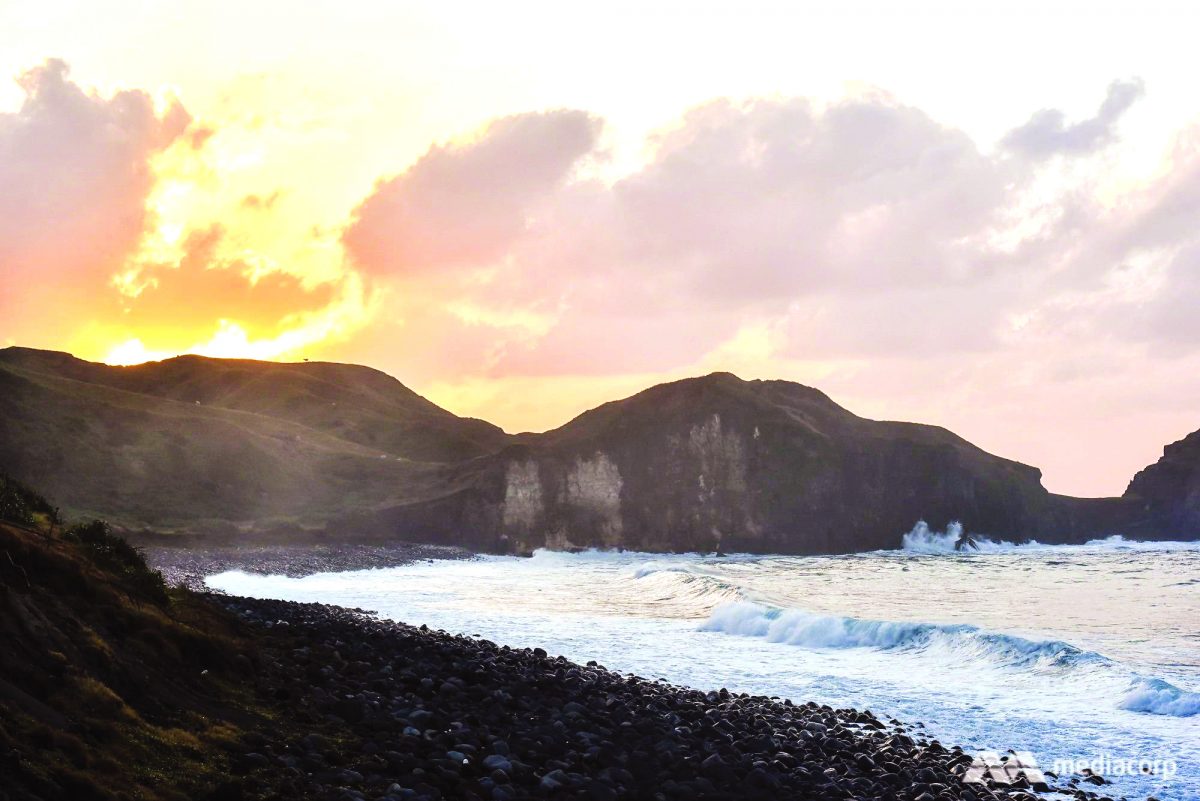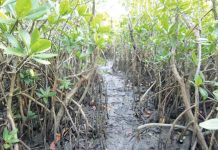
BATANES is like nowhere else in Southeast Asia. Its people, the Ivatan, have endured for some 4,000 years, mostly alone in their own part of the world. Innovation and resilience have been fundamental to a life in isolation, and in the path of many of the region’s typhoons.
Long ago, volcanic activity thrust ten islands out of a rugged patch of ocean. Wind and water have enveloped these islands since.
The elements have formed the landscape and defined the soul of a province set adrift from the rest of the Philippines. During the sustained storm season, a harsh weather brew conjures up conditions at their most furious where snarling waves pummel the cliffs and beaches and tempests redesign the terrain.

The archipelago hovers in the country’s extreme north, closer to Taipei than Manila. And when typhoons hit the Philippines, Taiwan, Hong Kong and Japan, the residents of Batanes expect to hear about it. The province finds itself in the exit track of the region’s most powerful systems, sometimes the direct target, often a nearby onlooker.
Yet, in the path of the storm, the Ivatans have survived.
The islands are home to about 20,000 people, mostly fishers and farmers scattered across rolling green expanses. Each of them has memories of when typhoons came to “visit” Batanes. Devastating storm events of recent years are still raw in the minds of many.
Constantino Gavilan confronted Super Typhoon Ferdie, known internationally as Meranti, from the most exposed point on Batan island – the weather station he has manned for 23 years. The local chief meteorological officer for the national weather bureau Pagasa saw winds hit 272 kilometers per hour before it took down the station’s radar. The shattered concrete and twisted metal of the sophisticated equipment still lie where they fell that day.

“It was if there was an earthquake when the wind blows,” Gavilan said, recounting one of the biggest storms of his career, while simultaneously sending data about a new typhoon that had entered the Philippines. This small station is a key reference point for weather developments in the country.
“Through all of our windows water was coming in. We were staying in two rooms but when our radar broke from the typhoon, the wind was too strong and there was pressure coming inside so we evacuated.”
In 2013, the story was almost the same. The violent eyewall of Typhoon Odette, internationally called Usagi, surged across Batanes and held it within its grasp for nearly 24 hours.

“It would sometimes become very dark and suddenly very bright during the day. It was a very strong typhoon,” recalled local fishermen and guide Roger Doplito. “I was fearing for my family. We were staying inside our houses, the winds were howling and corrugated iron sheets were flying. A lot of electric posts were down, electricity was cut for almost a month, the churches were destroyed and a lot of houses were destroyed.”
No one died in either event despite the direct collisions and widespread damage. It is testament to a remarkable toughness deep seated in Batanes.
The wisdom to understand nature and instincts to contend with its might has been garnered over generations. And Ivatans credit their ancestors with an inherent ability to cope.
SURVIVAL RITUALS
Florentino Galana is somewhat of a mystic figure in the small fishing community of Diura. The view from his simple home is a panoramic one, where the reverberations of heavy surf pounding the shore are a reminder of the harsh environment he lives in.
The 70-year-old is responsible for an annual secretive ritual that blesses the fishing season harvest and wards off bad omens.

But it is not magic that allows the Ivatans to master the shifting seas around them. He, like others, still uses rooted knowledge of the tides, sun and moon to understand the elements and forecast when danger looms, quite literally, on the horizon.
“Knowing the weather is the most important thing to learn in this livelihood,” Galana said.
“Even if the weather is good, you’ll see signs such as elongated clouds that are shaped like the waves; most of the time that’s the wind. When you see the waves suddenly leave sand and gravel on the shore, then not long after there will be a storm. When there’s a rainbow encircling the moon then that’s also an indicator of bad weather coming.”
“We learned it from our ancestors. Our forefathers told us precautionary signs and when we must prepare for them, and we take note of these. However, our younger folks no longer use these signs and depend on the Internet instead,” he said.
‘ALWAYS PREPARED’
Modernity is coming to the islands, but slowly. Traditional beliefs still dictate the way houses are built, crops are grown and food is prepared. All of it is learned knowledge to defy the elements.

The Ivatan construct their homes with walls of thick limestone, burnt and aged in the sun, and heavy cogon grass roofs, which can be effectively tied down in heavy winds. The kitchen is a separate building to the house living area, meaning food and livestock can be stored safely.
“We feel secure and safe compared to living in a modern house,” said Harold Gabutero, a barangay chief in the historic town of Chavayan. He explains that any resident requesting to build a more modern structure will try to be convinced to stick with the old method.
Rice is almost nonexistent as a crop in Batanes. Instead, a diet of root vegetables such as ube yams and sweet potatoes has prospered.
“We struggle because of the weather. Only a few succeed in growing vegetables because the wind, sea breeze, and flooding destroys crops,” said local farmer Melchora Montes.
“When the weather is bad and the ships bringing in food cannot dock on the island, the Ivatans will not grow hungry because they have root crops. The Ivatans are always prepared,” she said.
Merchant boats now regularly ply the three-day route from Manila to Basco bringing essential supplies, but in storm season they can be stuck at port for weeks. It is an improved situation from up to the 1980s, when a government ship would arrive once a year. But challenges remain that might trouble less resilient communities.
There is only one petrol station in Batan, which relies on that unsteady supply from Manila. Electricity can be cut for weeks on end, and after finally having internet coverage restored after years off the grid after Typhoon Ferdie in 2016, a month later Typhoon Ompong knocked it out again indefinitely.

Despite the damage to Internet infrastructure, Batanes was left mostly unscathed from the year’s strongest typhoons – internationally labelled Mangkhut – a colossal storm that killed 134 people and caused billions of dollars of damage across its international path in September.
Anxiety spread through Batanes as it barreled towards the islands, but preparations were better than they had ever been.
While no-one had died in Typhoon Ferdie two year earlier, rehabilitation took more than 12 months. The provincial governor Marilou Cayco had not rested upon historic laurels of endurance in the face of this next test.
“Before, we had nothing in our disaster office. We only had one shovel and one pail,” Cayco said. Authorities rolled out community training programs and seminars, purchased essential emergency supplies, distributed nylon roof reinforcement ropes, installed shutters on vulnerable doors and windows and stockpiled survival kits in a logistics hub.
The typhoon would miss Batanes, only bringing strong winds.
“I thank the Lord because the direction of the typhoon changed. We were informed that we would be directly hit by the typhoon, and if so then we would have been completely wiped out. And miracles did happen to us,” she said.

“I can say that we are much prepared than before. Our people in Batanes are resilient. If we are not resilient, then many of us would have already died.”
Determining trends about the strength and regularity of powerful typhoons using climate data is not simple. Between 2006 and 2016, 99 typhoons entered the Philippines; 10 of them were particularly deadly. While climate change is responsible for warmer sea temperatures, a factor in the intensity of tropical storms, damaging weather patterns are highly complex and multi-faceted.
But for residents of Basco, removed from the polluting industrial hubs of the region, the science is scary.
“There is an anomaly of temperature and the onset of the rainy season. More hot days and fewer cold days. The typhoons seem to be happening more often,” said Gavilan from PAGASA.
“A lot of people have noticed that a lot of strong typhoons are visiting now and they feel more frequent,” Roger Doplito said.
Like they always have, greater forces are moulding the shape of Batanes, and the lives of those who call it home. It is the past that will guide the Ivatans towards a future likely to be as turbulent as ever before. (By Jack Board/Channel News Asia)







